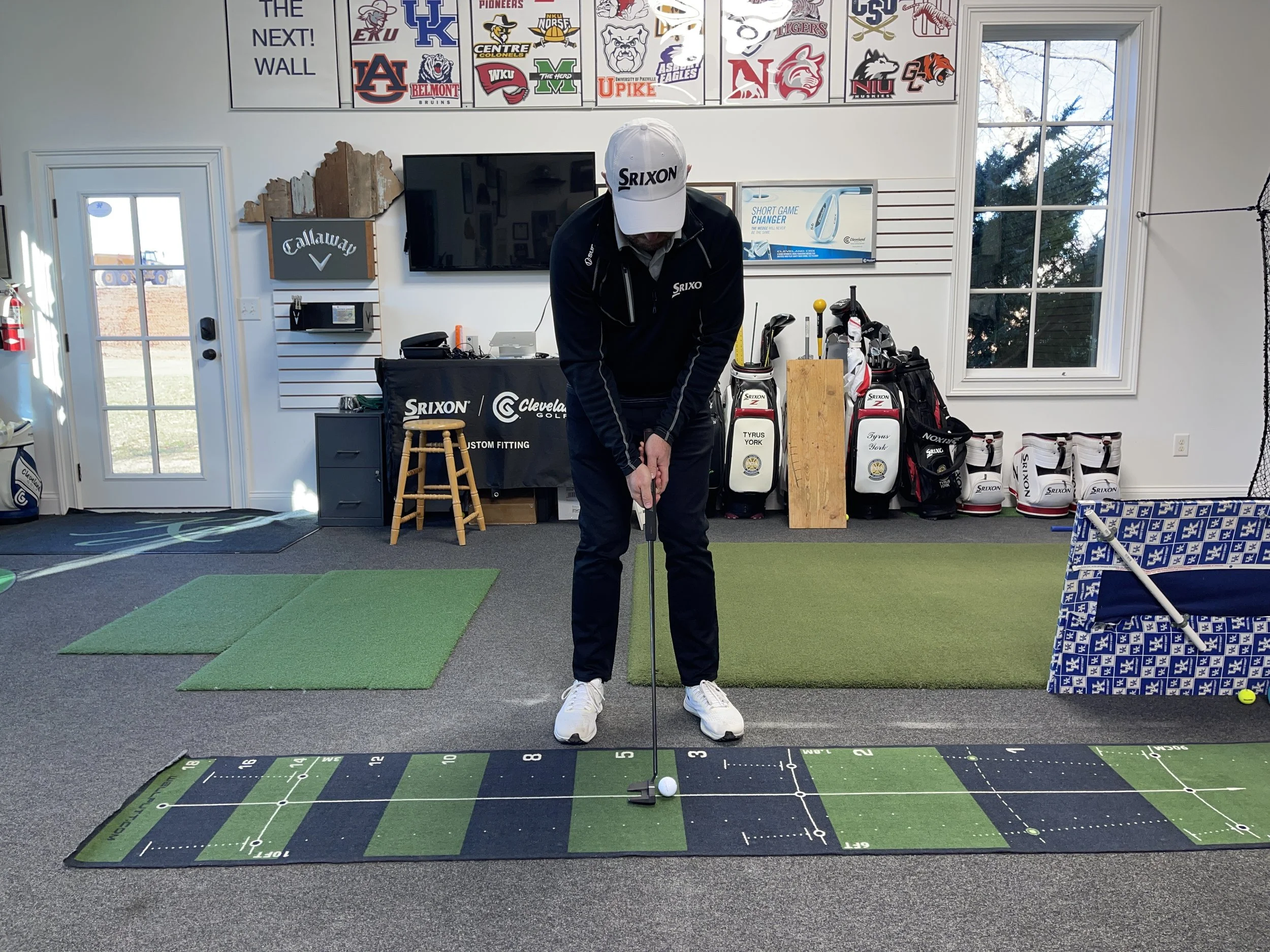Cutting through the clutter of information and disinformation on social media and the internet can be a full time endeavor. Whether it’s sports or politics, there seems to be an over abundance of people with differing opinions, and in some cases differing “facts”.
This week I want to cut through the clutter of information surrounding AimPoint, specifically AimPoint Express.
The motivation to tackle this topic right now comes from a particularly strange couple weeks for Aimpoint. It began with Keegan Bradley going through a green reading process that looked like AimPoint, only to miss his putt badly. This led to a crowd of online hecklers that poked fun of the fact he used what they thought was AimPoint and it didn’t work. (The truth is… although it appeared he was attempting to use AimPoint, what he did is NOT what is taught, aside from the fact that his speed control was off which would render any read he made likely useless).
Then, just as things started to quiet down, a kid (literally a kid less than 13 years old) was spotted using AimPoint at Augusta National during the Drive, Chip, and Putt Finals. The kid used the green reading process (way more accurately than Keegan Bradley did), which took an incredible 15 seconds to complete! Can you believe that?!? Someone taking 15 seconds to read a putt, especially a really important putt! Who does that??
Yes… that is sarcasm because we see on a weekly basis players on the PGA Tour using their fully allotted 40 seconds (sometimes longer) to read putts using methods not called AimPoint, if they even have a method at all. But because someone uses AimPoint, instead of using their eyes, it’s considered a bad look and bad for the game?
So what is AimPoint? AimPoint is a green reading technology (or system, technique, method, whatever you want to call it) developed by Mark Sweeney. It began as a very technical system that involved using a book to look up your correct read.
Believe it or not, about 12 years ago, Larry Ward and I participated in one of the first AimPoint clinics in the state of Kentucky. However, we both agreed that AimPoint in it’s current state was simply not usable for many of our clients.
Apparently Mark Sweeney agreed because it wasn’t long after that when he created AimPoint Express. This is what you see people now doing (or in Keegan Bradely’s case attempting to do). The biggest noticeable difference is that the books used to read the green are gone. Instead there is an expedited process that involves using your feet to feel the tilt of the green and assign it a number. You then take the number you felt and use the corresponding number of fingers to determine your line.
One concern, and the one I’ve always found the most legitimate, was that in order to feel the tilt of the green that is affecting your putt, you have to get in the line of your own putt between the ball and the hole. In the early days this had to be done with a somewhat “code of ethics” by straddling your line and avoiding actually making contact with your intended line of play (which would be a penalty). But now the USGA has decided (albeit for other reasons) that intentionally touching your line on the putting green is no longer a penalty. Therefore opening the floodgates for people to walk in their own line in order to feel the tilt.
Another concern is that when walking in your own line you may interfere with the line of another player. This one is easy… just don’t do it. You can always make a slight adjustment to where you need to stand in order to avoid stepping in another player’s line.
The biggest misconception with AimPoint Express is that it negatively affects pace of play. As we mentioned earlier, good players that are trying to grind out a made putt during a round will take a lot of time to do so. The Tour gives them about 40 seconds. This is a long time. However, when used correctly from beginning to end, AimPoint Express should take no longer than 20 seconds. In most cases it will take less than 10. However, if you want to use it, you better learn how to use it properly by attending an AimPoint Express class taught by any of the several certified instructors across the country.
Or you can log in to Twitter and make fun of what you don’t understand, which seems to be the route of many people that I would normally consider trustworthy and knowledgable individuals. (sorry for the sarcasm again)
If you are interested in actually learning what AimPoint Express is and how to use it, click here to check out the multiple opportunities I am offering.









